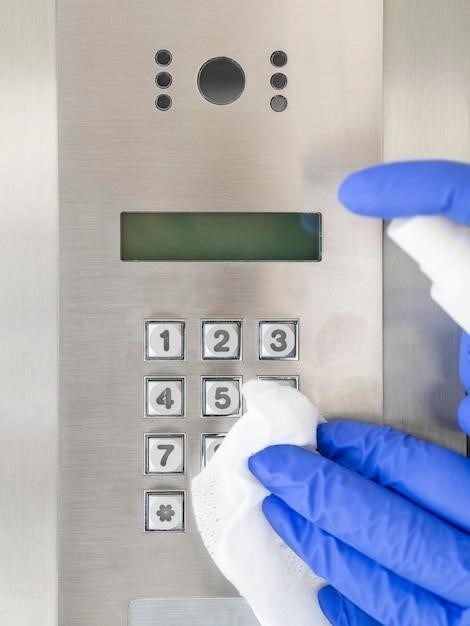G35 Auto to Manual Swap⁚ A Comprehensive Guide
This guide provides a comprehensive overview of converting an Infiniti G35 from an automatic to a manual transmission, covering essential components, the installation process, cost considerations, and important tips to ensure a successful swap.
Introduction
The Infiniti G35, known for its sleek design and powerful V6 engine, offers a captivating driving experience. While many G35s came equipped with automatic transmissions, enthusiasts often seek the more engaging and rewarding experience of a manual transmission. Converting an automatic G35 to a manual transmission, often referred to as a “manual swap,” can unlock a new level of driver engagement and performance. This guide will delve into the intricacies of this conversion, providing a comprehensive understanding of the components, installation process, and considerations involved.
Converting a G35 from automatic to manual is a significant undertaking that requires a substantial investment of time, effort, and resources. It is crucial to understand the complexity of the project and the potential challenges that may arise. However, for those who are passionate about driving and seek a more visceral connection with their vehicle, the rewards of a successful manual swap can be immense. This guide will equip you with the knowledge to navigate this project and achieve a satisfying outcome.
Components Needed for the Swap
A successful G35 auto-to-manual swap necessitates acquiring a comprehensive set of components. The core of the conversion lies in the transmission and differential, which are essential for the manual drivetrain. You’ll need a 6-speed manual transmission (6MT) and a corresponding rear differential that matches the transmission’s gear ratio. Additionally, a clutch system, including a clutch pedal, master cylinder, slave cylinder, and clutch lines, is crucial for engaging and disengaging the transmission.
Beyond these core components, various other parts are required for a seamless integration. This includes a new driveshaft tailored for the manual transmission, a flywheel to connect the engine to the transmission, a clutch kit consisting of a pressure plate, clutch disc, and throw-out bearing, and a pilot bearing for the input shaft of the transmission. It is crucial to ensure that all components are compatible with your specific G35 model year and engine type.

Transmission and Differential
The heart of the G35 auto-to-manual swap lies in the transmission and differential. These components are the foundation of the manual drivetrain and must be carefully chosen for compatibility and optimal performance. You’ll need a 6-speed manual transmission (6MT) specifically designed for the G35, ensuring it’s compatible with your car’s engine and model year.
The rear differential is equally crucial, as it works in tandem with the transmission to transfer power to the rear wheels. It’s essential to select a differential with a gear ratio that matches the 6MT for smooth and efficient operation. The differential also needs to be compatible with your G35’s rear axle, ensuring proper fit and functionality. The choice of transmission and differential directly impacts the overall driving experience, affecting factors like acceleration, cruising speed, and fuel economy.
Clutch and Pedals
The clutch system is the critical link between the engine and transmission in a manual car. For your G35 swap, you’ll need a complete clutch kit, including a new clutch disc, pressure plate, and release bearing. The clutch disc connects to the flywheel, transferring power from the engine to the transmission. The pressure plate applies force to the clutch disc, engaging and disengaging the transmission. The release bearing helps the clutch disengage smoothly.
You’ll also need to install a new clutch pedal assembly, as the automatic transmission doesn’t have one; This includes the pedal itself, the linkage connecting it to the clutch master cylinder, and the clutch master cylinder itself. The master cylinder creates hydraulic pressure that operates the slave cylinder at the transmission, disengaging the clutch. You’ll also need a new brake pedal assembly, as the automatic transmission model doesn’t have a manual brake pedal.
Other Essential Parts
Beyond the core transmission, clutch, and pedal components, several other parts are crucial for a successful G35 auto-to-manual swap. A new driveshaft is essential, as the automatic transmission’s driveshaft is typically shorter and will not fit the manual transmission. The driveshaft connects the transmission to the rear differential, transmitting power to the wheels. Ensure it’s the correct length for your specific model and year.
You’ll also need a new shifter assembly. The shifter connects to the transmission and allows you to control gear selection. The shifter assembly includes the shifter itself, the linkage, and the shifter boot. A new shift knob is also required for manual operation. Lastly, consider a new flywheel for your engine. The automatic transmission uses a different flywheel than the manual transmission, and a manual-specific flywheel is necessary for optimal clutch performance.
Installation Process
The installation process for a G35 auto-to-manual swap is a significant undertaking, requiring a combination of mechanical knowledge, specialized tools, and patience. The process involves removing the automatic transmission and installing the manual transmission, along with all associated components. It’s crucial to follow a detailed guide and ensure proper alignment and torque specifications for each part.
The process begins with disconnecting the battery to prevent electrical hazards. The automatic transmission is then removed, requiring the removal of various components, such as the exhaust system, driveshaft, and engine mounts. The new manual transmission is then installed, along with the clutch, flywheel, and driveshaft. The shifter assembly is connected, and the clutch hydraulics are bled. The installation process concludes with final adjustments, such as aligning the shifter and adjusting the clutch pedal.
Clutch Pedal Installation
Installing the clutch pedal is a critical step in the G35 auto-to-manual swap, as it directly controls the engagement and disengagement of the clutch. This process requires careful attention to detail and proper tools. The clutch pedal assembly, including the master cylinder and hydraulic lines, is installed in place of the original automatic transmission pedal.
The installation process involves securing the pedal assembly to the firewall and connecting the hydraulic lines to the master cylinder. Adjusting the pedal height and travel distance is crucial to ensure proper clutch engagement and disengagement. You’ll need to bleed the clutch hydraulic system to remove any air bubbles, ensuring smooth and consistent operation.
A pinch weld remover and a stepper bit are essential tools for this process. They help remove the pinch welds that secure the automatic pedal assembly to the firewall, allowing for the installation of the manual pedal assembly. Proper installation and adjustment of the clutch pedal are vital for smooth and reliable manual transmission operation.
Connecting the Transmission
Connecting the manual transmission to the engine and drivetrain is a crucial step in the G35 auto-to-manual swap. This process involves aligning the transmission with the engine, bolting it securely in place, and connecting the driveshaft. The transmission is carefully positioned to ensure proper alignment with the engine, and the bellhousing is bolted to the engine block.
The driveshaft, which transmits power from the transmission to the rear differential, needs to be compatible with the manual transmission. You may need to source a new driveshaft specifically designed for the manual transmission. Once the transmission is securely connected, the shifter linkage needs to be installed.
The shifter linkage connects the transmission to the shifter in the cabin, allowing the driver to select gears. Proper alignment and adjustment of the shifter linkage are essential for smooth and accurate gear selection. The process requires careful attention to detail and proper tools to ensure that the transmission is correctly connected and aligned.
Final Adjustments and Testing
After the G35 manual transmission swap is complete, meticulous final adjustments and thorough testing are essential to ensure proper functionality and performance. This involves fine-tuning the clutch pedal, ensuring smooth gear changes, and verifying that the transmission operates correctly at various speeds.
The clutch pedal needs to be adjusted so that it engages and disengages smoothly, providing a comfortable and responsive driving experience. The shifter linkage should be adjusted to minimize any play or looseness, ensuring precise gear selection. The transmission fluid level must be checked and topped off as necessary.
A test drive is crucial to evaluate the overall performance of the swap. The car should be driven on different road conditions and at various speeds to assess the transmission’s performance, the clutch’s engagement, and the overall driving experience. If any issues arise during testing, they should be addressed promptly to ensure a safe and enjoyable driving experience.
Cost Considerations
The cost of converting a G35 from automatic to manual transmission can vary significantly, depending on the source of parts, labor costs, and the specific components involved. A basic swap kit, typically including the transmission, clutch, flywheel, and pedals, can range from $2,000 to $3,000. However, additional parts like the driveshaft, differential, and other essential components may increase the total cost.
Labor costs for the swap can be substantial, especially if you opt for professional installation. Experienced mechanics may charge upwards of $1,000 for the entire swap process, depending on the complexity of the installation and the shop’s labor rates. It’s essential to factor in these costs when budgeting for the swap, as they can easily add up.
Consider sourcing parts from reputable salvage yards or online retailers to potentially save on costs. However, ensure that the parts are in good condition and compatible with your G35 model. If you choose to perform the swap yourself, you can save on labor costs but must have the necessary skills and tools to ensure a successful installation.
Converting a G35 from automatic to manual transmission can be a rewarding endeavor for enthusiasts seeking a more engaging driving experience. This guide has outlined the essential steps, components, and considerations involved in such a swap. It is crucial to carefully plan and budget for the project, considering the cost of parts, labor, and potential unforeseen expenses. With proper planning, sourcing of components, and skilled installation, the G35 auto to manual swap can transform your vehicle into a more dynamic and enjoyable driving machine.
Remember to prioritize safety throughout the process, carefully follow installation instructions, and seek professional assistance if you lack the necessary experience. By adhering to these guidelines, you can ensure a successful and satisfying swap that enhances your G35’s performance and driving pleasure.


